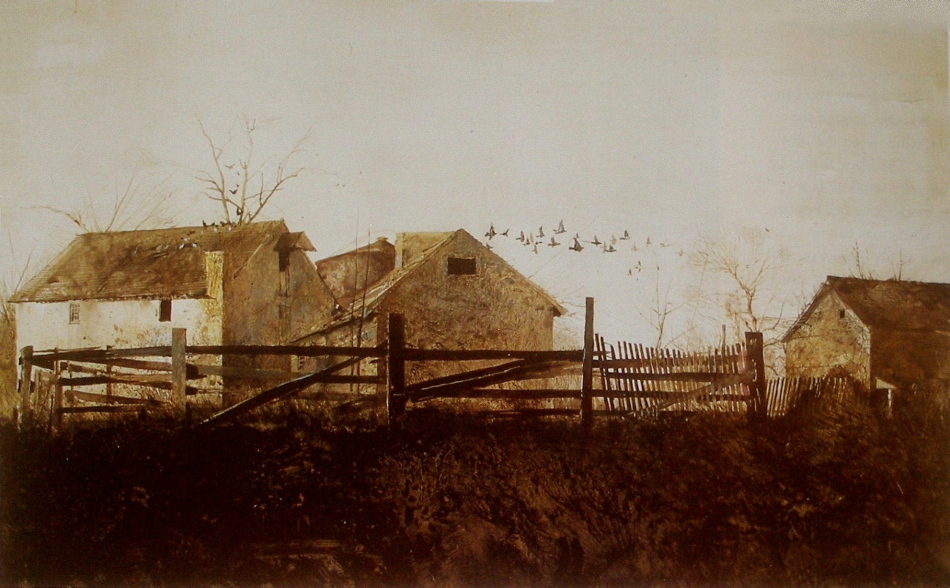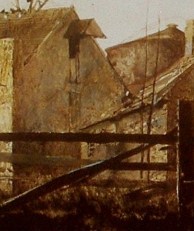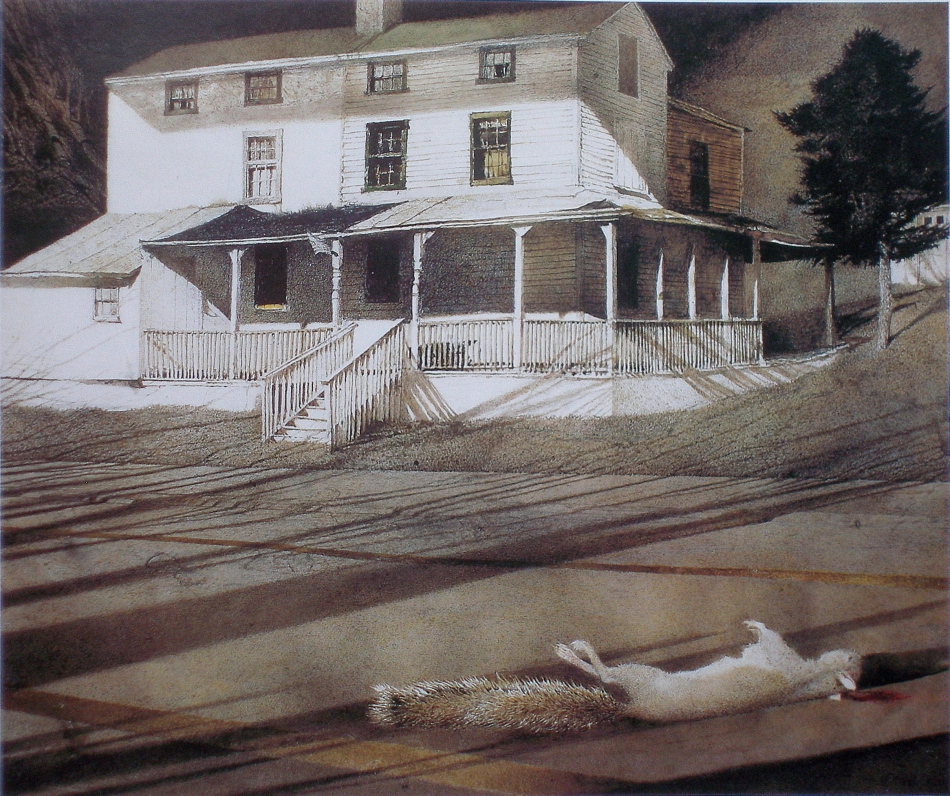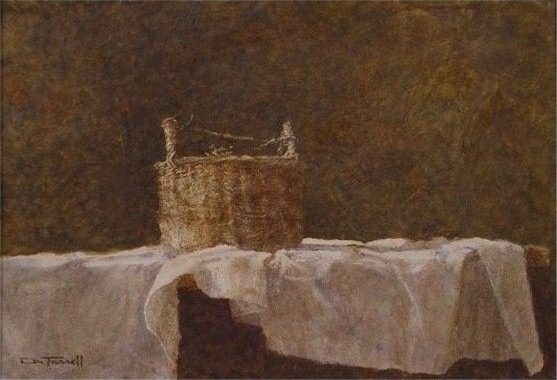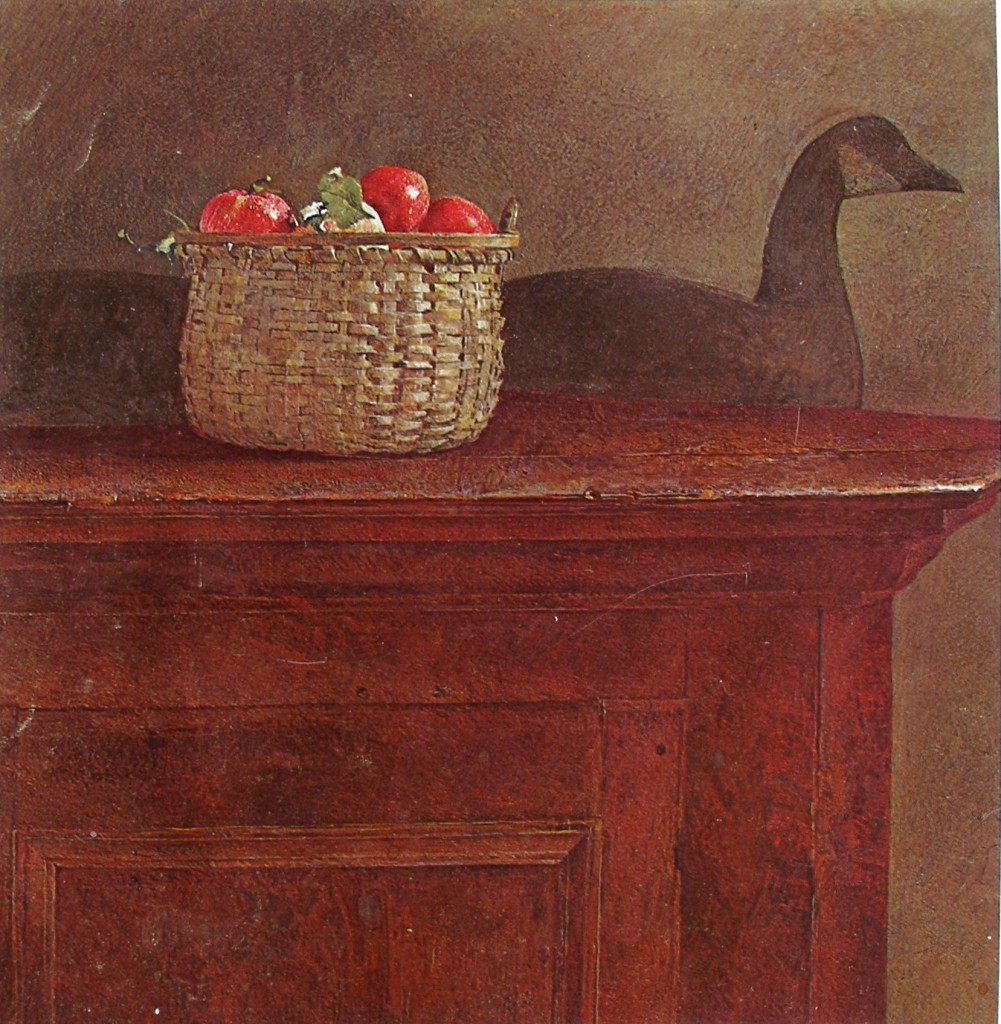Wyeth’s work is far beyond figurative considerations, engaging with us on so many levels, and in this post I will focus on his composition, which is remarkable. His integration and the wonderful movement he provides with parallels is very impressive.
First to the very sensitive rhythm of parallels he created with a diagonal board in the fence, the eave of the roof just above and the roof line of the building behind (see detail). These guide us to the focus of the painting which is the dark window and to the flight of the birds.
Now to his poetic integration of the birds with the tree and the fence post as well as the top curve of the pickets, is a superb example of how graceful and sensitive compositional structure can be. You either take the path of the post to the strong rectangular shape of the foreground which will return you to the parallels. The other path is absolutely fantastic! Follow the birds to the tree and then along the top of the pickets. We are then guided to the roof line returning us to the flight of the birds. I hope you can sense the wonderful shape, or loop, which also gently returns us to the focus. It is brilliant.
I must also mention the triangle shape projecting up from the large dark foreground shape pointing into the building at the right. Can you feel how it parallels harmonizes with the triangles all the buildings?
This is visual poetry! And there is more for you to discover. Enjoy!

